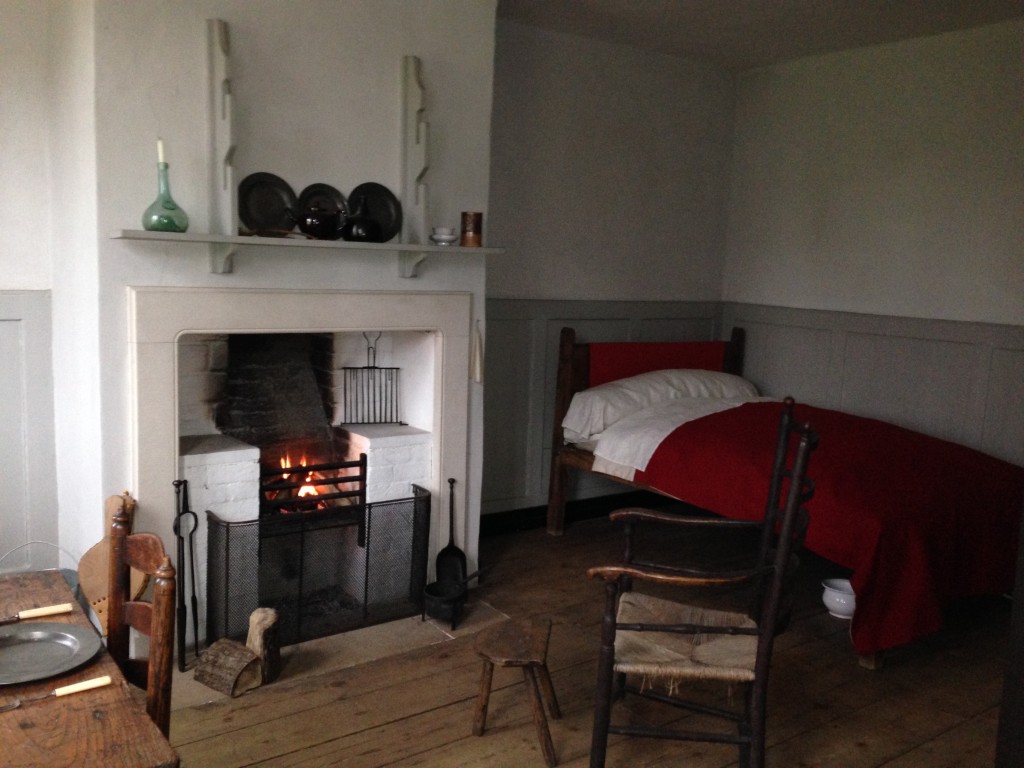MA student Ellen Martin (History of Design and Material Culture) spent a day at ‘Home Atmospheres: Sensing and Feeling at Home’, the 6th Annual conference of the Histories of the Home at the Geffrye Museum in London.
Last month I indulged in a bit of extra-curricular activity by attending the 6th annual conference of the Histories of Home Subject Specialist Network. The group describes itself as “an interdisciplinary network bringing together academics, archivists, museum professionals and postgraduate students to promote the study of the home,” and was founded by the lovely Geffrye Museum of the Home in Hoxton. As an MA student in the History of Design currently researching interwar home interiors, the event naturally appealed to me – and an excuse to spend a spring day at the Geffrye was more than welcomed.
This year the focus of the conference was the senses and the home (devised in collaboration with the Nottingham Sensory Studies Network at the University of Nottingham). By merging these two areas of study, a space was created for researchers from a range of fields to come forward and present their work on home histories in a new and interdisciplinary way. Specific as it may sound, you got the impression that this is in fact a field rich with research possibilities, and the ten speakers proved just that. From anthropologists to historians, cultural geographers to curators, unique ideas were presented from many disciplines, each exploring some notion of sound, touch, sight, taste or smell within the home. Nestled between the Geffrye Museum’s leafy gardens and 20th century room exhibits, the museum’s conference room was a perfect place to house such an event.
The day was introduced by keynote speaker Ben Highmore, Professor of Cultural Studies at the University of Sussex. Author of Ordinary Lives: Studies in the Everyday, he set the tone for the day with a wonderful talk celebrating the diverse and the domestic. Particularly interesting was his bizarre fascination with… radiators. More specifically, the effects of central heating on 20th century home life (for example, the way we would once gather around a glowing fireplace, now replaced by a glowing TV screen).
Other talks ranged from the advertising techniques of 1950s air fresheners, to home-making in the 19th century American West. Many drew on unusual archive collections; one progressive historian even used TripAdvisor.com to gather museum visitor feedback! Particularly insightful (and applicable to some of our studies on the MA) were talks from Barbara Wood, curator for the National Trust, and Rhiannon Goddard, exhibition manager for Historic Royal Palaces in London. Both raised issues around the challenge of creating ‘authenticity’ in historic houses today. In these times of financial difficulty for such arts and heritage institutions, it is the curator’s job to maintain visitor numbers by creating enticing exhibitions. This is often done, Rhiannon said, by engaging the senses through use of interactive media, theatrical reconstructions and even conjuring up nostalgic smells. The full conference programme and podcasts of the presentations are here.

1780s room within restored Almshouse at the Geffrye Museum. Photo by Eleanor Black, courtesy of the Geffrye Museum. 28 March 2014.
The day ended with a drinks reception and a curator-led candlelit tour around the Geffrye’s restored almshouse. A fascinating day, which offered a glimpse into sensory elements of home life rarely touched upon in academic contexts. I would encourage anyone interested in home studies to join the Histories of Home mailing list.